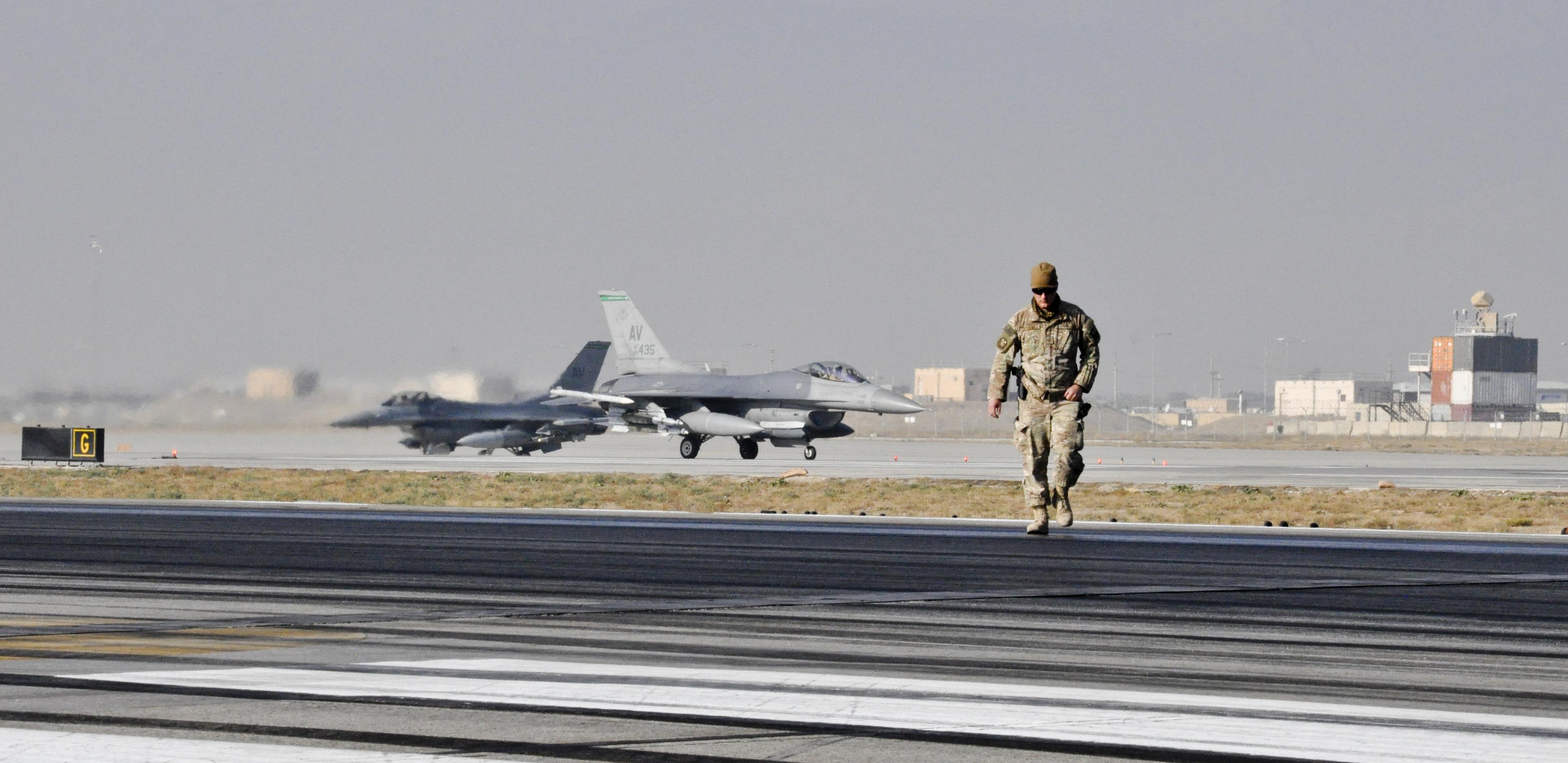By Tech. Sgt. Nicholas Rau, 455th Air Expeditionary Wing
Public Affairs / Published October 27, 2015
BAGRAM AIRFIELD, Afghanistan (AFNS) -- With combat airpower
operations coming and going from Bagram Airfield nearly every three minutes,
taking care of the flightline is a vital operation.
Airmen from the 577th Expeditionary Prime Base Engineer
Emergency Force Squadron out of Al Udeid Air Base, Qatar, worked to remove
rubber buildup on the runway, while teaming up with the 455th Expeditionary
Civil Engineer Squadron that was performing upkeep on the arresting cable
system and worn reflective markings, all in order to ensure another six months
of runway integrity.
“I believe that this maintenance is a significant part of
what we are trying to keep going (in terms of airpower) in Afghanistan and
around the area of responsibility,” said Tech. Sgt. Christopher Fitzgerald, of
the 577th EPBS, who is deployed from Shaw Air Force Base, South Carolina. “It’s
just a small part of the bigger picture.”
To remove the buildup caused by constant air traffic, the
team from Al Udeid first applied a solvent to begin to break up the rubber.
They then used modified sweepers to grind in the solvent and allow the rubber
to separate. Finally, a biodegradable product was applied that foamed
underneath the rubber, causing it to lift and float away.
To pull off this operation, the Prime BEEF team, made up of
Air Force specialties such as plumbers; heating, ventilation and air
conditioning technicians; and electricians from different bases, bonded
together as a runway maintenance team to time each application.
“This all starts with your teammates. I had an awesome crew
who was willing to adapt and show me how to do this job,” said Senior Airman
Charles Chambers, of the 577th EPBS, who is deployed from Little Rock AFB,
Arkansas. “This has actually helped me grow as a person. With these people
being from different places, you have to humble yourself, and I am glad I did.
It helped me learn who they were and the traits they had, so that I could learn
how to use equipment that I didn’t understand how to operate in the beginning.”
Once the rubber was removed, the 455th ECES applied paint mixed
with reflective beads to the faded runway markings. This simple form of
maintenance, once accomplished, can reduce the need for repainting by a year or
more, and provide pilots with a clear runway picture when coming and going from
Bagram Airfield.
To ensure all safety devices are serviceable and ready for
use, Staff Sgt. Timothy Shearer and his 455th ECES team performed maintenance
on the aircraft arresting cable system. The entire length of both cables, over
300 feet long, was extended and inspected for damage. Once they had trimmed off
and replaced the portions in need of service, they had to make sure it was
meticulously installed to demanding specifications.
These cables catch the jets in case of an emergency landing,
making sure the aircraft lands safely, much like on an aircraft carrier,
Shearer said, adding that they have to be the right length or the aircraft will
be pulled to the side.
Throughout the transition of Bagram’s missions over the
years, two things have remained constant -- airpower and maintenance. Lesley
Ellis, the Bagram Airfield manager, has witnessed both of these firsthand
during his 13 years in charge of the runway.
“We do about 24,000 missions monthly at Bagram. We do combat
sorties and resupply for the units at forward operating bases in the area,”
Ellis said. “I believe that we are the number one enduring air base in
Afghanistan. We are the prime location for anti-terrorism efforts.”








No comments:
Post a Comment